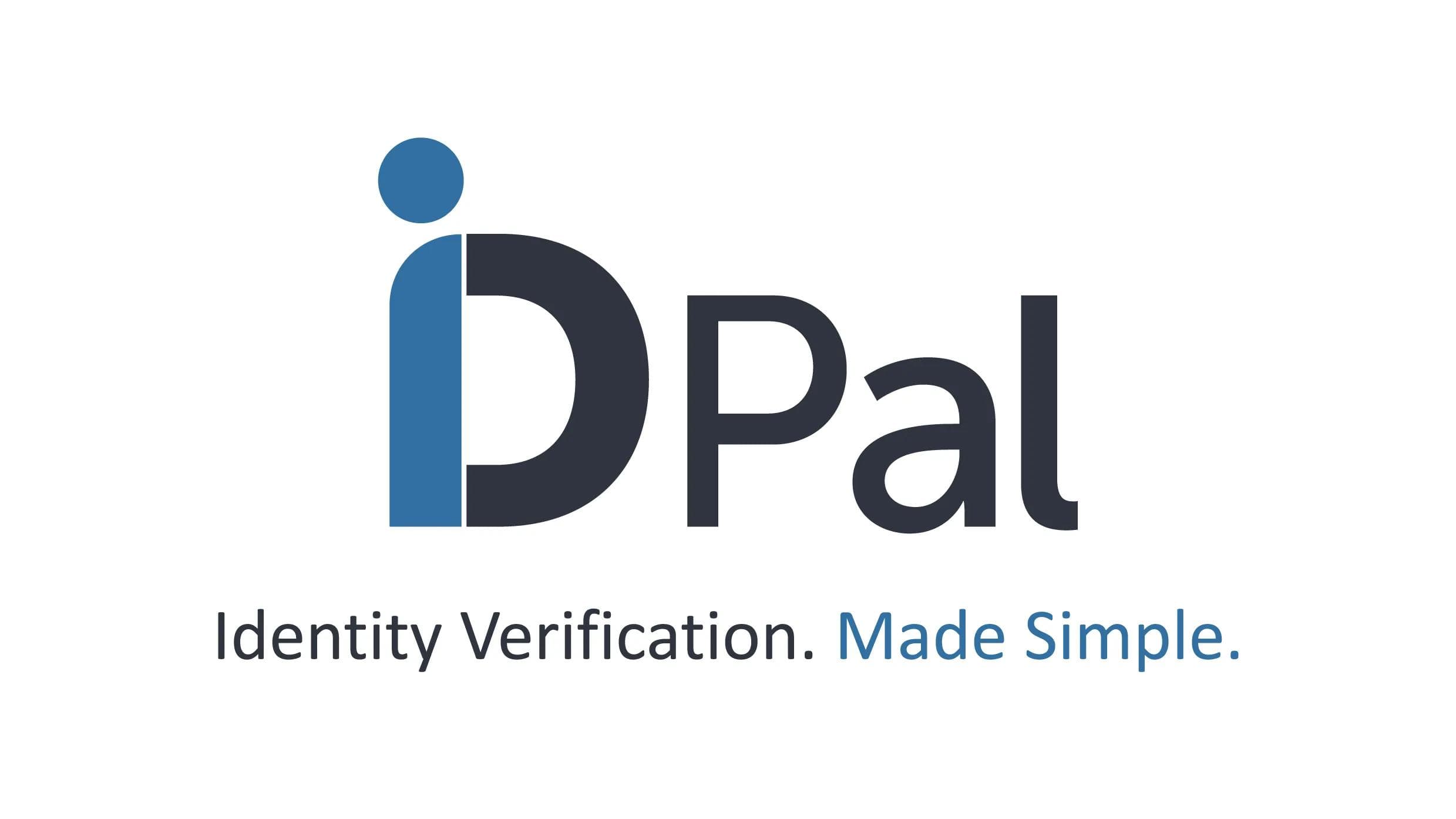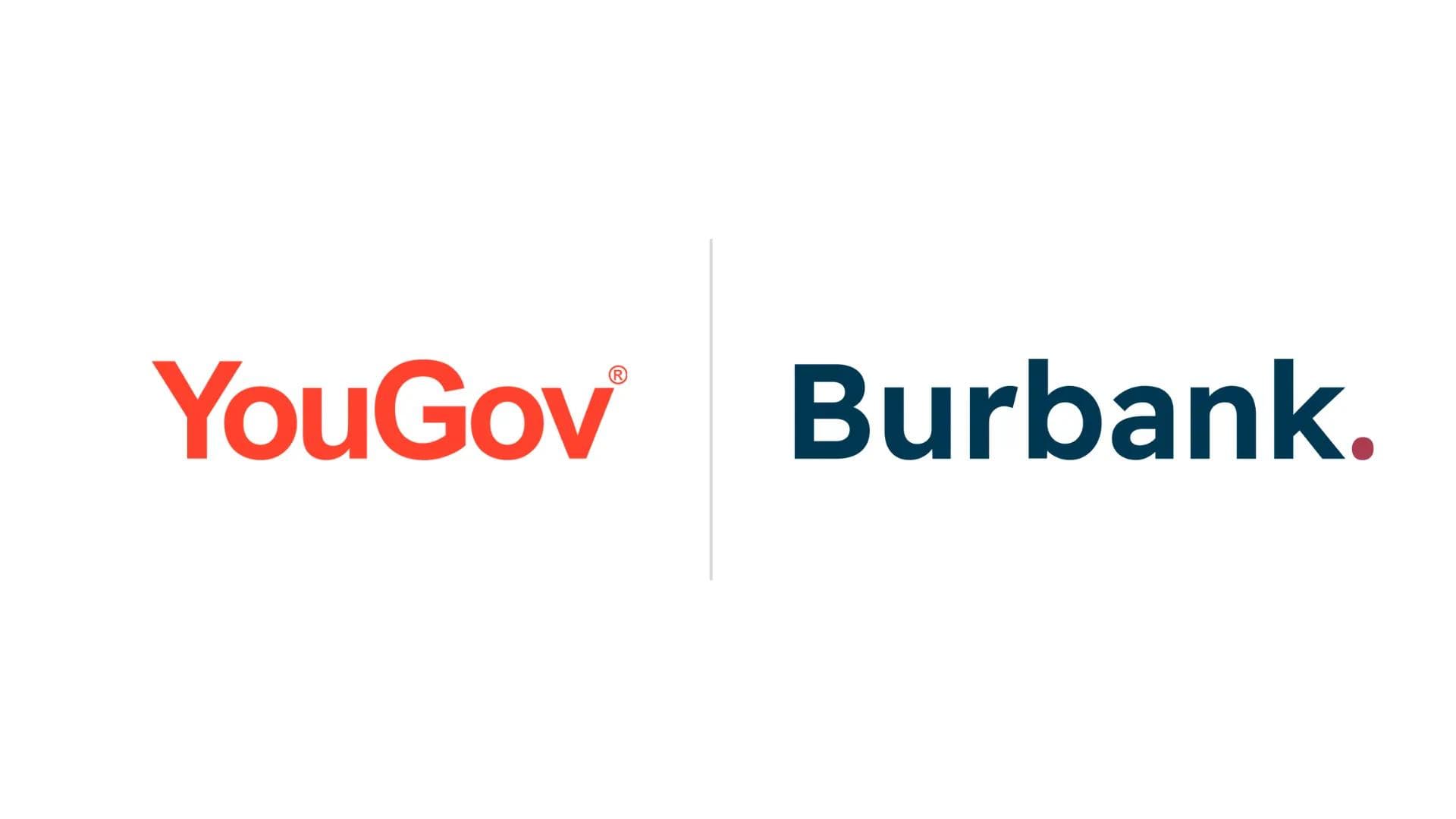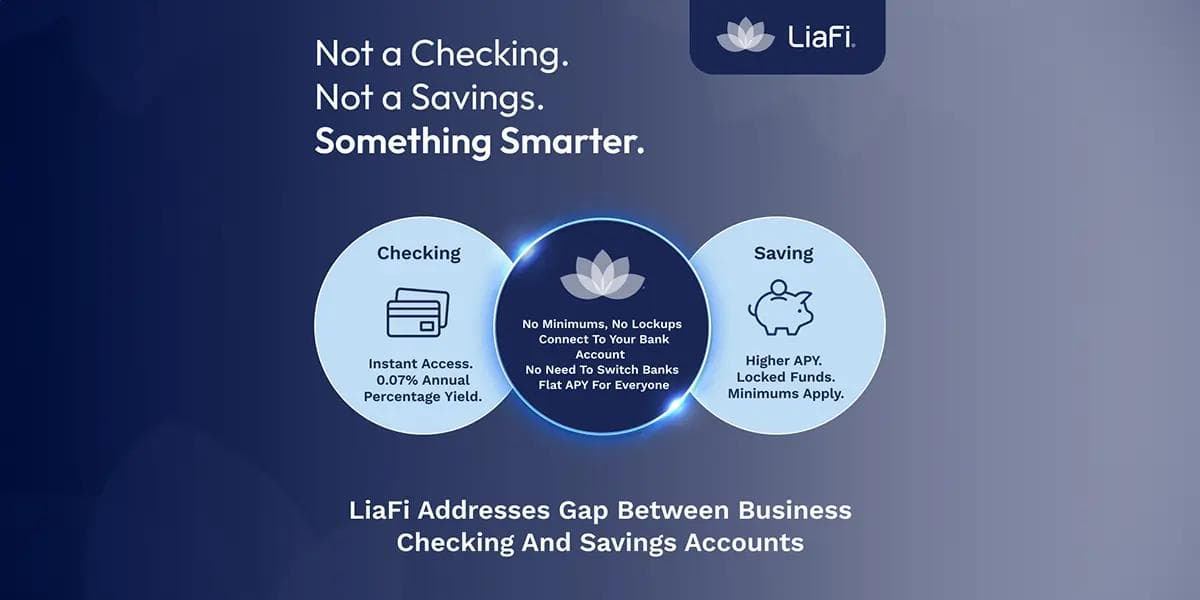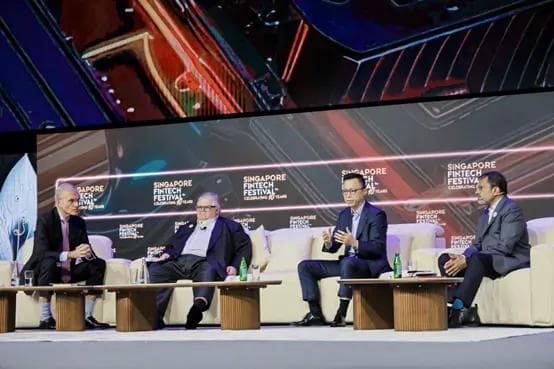Bridging the Financial Divide: How 5G is Advancing Global Financial Inclusion
Bridging the Financial Divide: How 5G is Advancing Global Financial Inclusion
Published by Jessica Weisman-Pitts
Posted on April 18, 2025

Published by Jessica Weisman-Pitts
Posted on April 18, 2025

The convergence of 5G technology and financial services is reshaping the digital banking landscape, particularly for the world’s unbanked and underbanked populations. With over 1.5 billion 5G connections globally by the end of 2023, this next-generation wireless network is no longer just about faster speeds—it’s emerging as a foundational enabler of inclusive, accessible financial ecosystems. From rural connectivity to real-time mobile transactions, 5G is accelerating efforts to expand banking services to populations long excluded from the formal financial system.
The Scale of the Transformation
The economic potential of 5G in financial services is rapidly gaining momentum. According to Knowledge Sourcing Intelligence, the global 5G fintech market is expected to reach $122.47 billion by 2029, expanding at a compound annual growth rate (CAGR) of 44.53% from 2024. This projected growth underscores how 5G is not merely a connectivity upgrade—it is a structural shift poised to redefine financial service delivery models, particularly for populations that have historically been excluded from the formal banking system.
Breaking Down the Barriers
Conventional banking models have long struggled to reach remote and underserved regions due to high infrastructure costs, unreliable connectivity, and the limited commercial viability of low-density areas. By enabling high-speed, low-latency mobile access, 5G networks are helping financial institutions overcome these limitations—reducing dependence on brick-and-mortar branches and extending digital financial services to populations previously left behind.
Mobile Banking Revolution
The rise of 5G technology is reshaping mobile banking by enabling faster, more secure, and interactive financial services. With ultra-low latency and high bandwidth, 5G networks support real-time transactions and smooth video banking experiences, allowing customers to consult with financial advisors remotely as if meeting in person. This enhanced performance is particularly beneficial in areas with limited or nonexistent physical bank branches.
Additionally, integrating 5G with edge computing reduces latency for mobile banking apps, streamlining complex financial processes such as loan applications or identity verification. The improved network responsiveness also facilitates the deployment of advanced biometric authentication methods, including facial recognition and behavioral biometrics, strengthening security while maintaining user convenience.
By enhancing connectivity, reliability, and security, 5G-powered mobile banking opens new opportunities to deliver efficient, inclusive services at scale—especially in regions with limited access to traditional financial institutions.
Pop-up Banking Solutions
One of the most innovative applications of 5G in banking is the deployment of mobile, full-service “pop-up branches” that can be deployed in underserved or remote regions. These temporary banking units require minimal physical infrastructure and can be quickly relocated to meet changing demand. Backed by high-speed, low-latency 5G connectivity, these branches offer seamless access to core banking systems, enabling real-time transactions, customer onboarding, and secure authentication—comparable to what customers would experience in a traditional branch.
This flexible model significantly reduces the cost of delivering services to rural communities while expanding access to critical financial tools in areas where conventional banking infrastructure is absent. By removing the dependency on fixed locations, 5G-enabled pop-up banking is emerging as a practical and inclusive solution to closing the service gap in financial access.
Impact on Different Demographics
Rural Communities
In rural areas where banking infrastructure has historically been limited, 5G is pivotal in expanding access to financial services. With improved mobile connectivity, individuals can now open accounts remotely with real-time identity verification, eliminating the need to travel long distances to physical branches. Digital lending platforms, supported by 5G’s reliable data transfer capabilities, enable rural customers to apply for and receive microloans through mobile devices—broadening access to credit in previously underserved regions.
Additionally, real-time money transfers and bill payment services have become more accessible, helping to integrate rural populations into formal financial ecosystems. 5G is also enhancing the delivery of agricultural financing solutions via mobile platforms, allowing farmers to access funding, manage payments, and interact with financial institutions without leaving their communities.
Urban Underbanked
In urban environments, where physical proximity to financial institutions may not always translate to meaningful access, 5G enables solutions that address persistent barriers underbanked populations face. Enhanced connectivity supports streamlined onboarding processes, allowing individuals to open accounts and verify identities directly through mobile applications—reducing paperwork and in-person requirements that often deter participation in the formal banking system.
Access to micro-lending platforms has expanded through mobile interfaces, giving small business owners and gig economy workers flexible financing options previously out of reach. Meanwhile, the growing sophistication of digital wallets has made everyday transactions—from bill payments to peer-to-peer transfers—more efficient and secure. Additionally, 5G’s high bandwidth supports AI-driven financial advisory tools, offering personalized financial guidance to users lacking access to traditional advisory services.
Unbanked Populations
Globally, an estimated 1.4 billion adults remain unbanked—without access to even the most basic formal financial services, according to the World Bank's Global Findex database. Barriers often include lack of official identification, distance from bank branches, high transaction fees, and mistrust in financial institutions.
5G technology offers a practical solution by enabling mobile-first financial services that do not rely on fixed infrastructure. With a 5G-connected smartphone, unbanked individuals can access mobile wallets, savings tools, and payment systems—often for the first time. In some regions, digital onboarding processes supported by biometric authentication allow individuals without traditional documentation to open accounts securely and remotely.
By minimizing reliance on physical infrastructure and reducing onboarding friction, 5G is helping unlock access for populations previously excluded from the financial system. As mobile coverage expands and device costs decrease, the unbanked stand to benefit significantly from the new digital financial ecosystem.
Security and Trust
As digital banking becomes more prevalent, the security of financial data and transactions remains a top priority. 5G technology introduces several advanced security features that strengthen the protection of mobile payments and digital financial services.
One of the key innovations is network slicing, which enables the creation of dedicated, isolated virtual networks. For financial institutions, this allows for secure transmission channels that segregate sensitive data from broader traffic, reducing the risk of cyberattacks and service disruptions.
5G also supports enhanced encryption protocols, offering stronger safeguards for data in transit. These advanced protocols help ensure confidentiality and integrity in high-volume financial transactions conducted over mobile networks.
In addition, 5G’s low-latency environment enables real-time fraud detection systems to operate more efficiently, flagging suspicious behavior and intercepting threats before they can impact users. This is particularly valuable in regions where traditional banking security mechanisms are limited.
These technologies enhance user trust and create a more secure foundation for delivering inclusive financial services across mobile platforms.
The Role of Mobile Money
5G technology significantly enhances mobile money services, particularly in regions with limited access to traditional banking. By delivering high-speed, low-latency connectivity, 5G enables mobile payment platforms to operate more efficiently and reach users in remote or underserved areas. This advancement allows individuals to send and receive money, pay bills, and access financial tools directly from their mobile devices—without needing physical bank branches.
5G's capabilities also support instant cross-border transactions, helping to reduce the cost and complexity of international money transfers. This is especially valuable for migrant workers and small businesses, which depend on affordable, timely remittance services to sustain operations and livelihoods.
Looking ahead, the integration of 5G and the Internet of Things (IoT) enables machine-to-machine payments, where connected devices can initiate transactions autonomously. This emerging capability is streamlining commerce, enhancing efficiency, and paving the way for frictionless financial interactions across industries.
By increasing speed, reliability, and accessibility, 5G is strengthening mobile money's role in promoting financial inclusion and empowering individuals and businesses in emerging and advanced economies.
Real-World Transformation: How 5G Is Advancing Financial Inclusion
Africa: 5G Expanding Financial Access Across the Continent
Kenya: Equitel Launches Africa’s First 5G MVNO for Inclusive Mobile Banking
Equitel, the mobile virtual network operator (MVNO) under Finserve and Equity Group Holdings, became the first successful MVNO in Africa to launch 5G services in 2024. As Kenya’s leading mobile banking channel, Equitel combines telecommunications and digital finance to provide real-time mobile banking, merchant payments, and money transfers. Now active in over 370 locations, including Nairobi, Mombasa, and Kisumu, Equitel’s 5G rollout enhances mobile banking accessibility for underserved communities nationwide.
South Africa: MTN Expands Mobile Money with PayShap Integration
MTN South Africa has integrated PayShap, a rapid digital payment solution, into its MoMo mobile money platform, becoming the first non-bank provider to do so. In partnership with Investec and Electrum, MTN enables real-time, low-cost transactions for South Africa’s unbanked population. The move mirrors India's UPI model, supporting financial inclusion through fast, secure, and mobile-first banking tools.
Asia
India: Jio’s Nationwide 5G Rollout Enhancing Digital Financial Access
Reliance Jio achieved nationwide 5G coverage across India in 2023, reaching every town and city ahead of schedule. With over 130 million 5G users, Jio’s network underpins India’s mobile-first financial ecosystem, enabling rural and remote populations to access banking apps, real-time payments, and financial services previously constrained by infrastructure limitations.
China: 5G-Powered Rural Banking Innovation
China Construction Bank’s 5G+ intelligent banking program is transforming rural service delivery. Smart Teller Machines and Financial Capsules—equipped with biometric authentication and video advisory services—deliver full-service banking to customers in remote areas. This initiative demonstrates how 5G-powered infrastructure can scale inclusive financial services nationwide.
Cambodia: Smart Axiata’s Strategic Investments in 5G Infrastructure
Smart Axiata, Cambodia’s leading telecommunications provider, began trialing 5G technology in partnership with Huawei in 2019, becoming the first operator in the country to do so. These trials marked a significant step toward evaluating and deploying next-generation mobile services in key urban areas.
In 2025, Smart secured a USD 50 million strategic financing package from CIMB Bank Cambodia to enhance network quality and prepare for a nationwide 5G rollout. The investment will support Smart’s infrastructure expansion, including improved service reach in underserved regions.
By strengthening its 5G capabilities, Smart Axiata is laying the foundation for more inclusive access to digital financial services, especially in rural provinces where mobile-first tools can help close the banking gap.
Latin America: 5G Fueling Regional Digital Finance
Brazil: Nubank’s NuCel MVNO Leverages 5G for Financial Inclusion
Nubank, Brazil’s largest digital bank, recently launched NuCel, a mobile virtual network operator (MVNO) offering 5G services integrated with its financial platform. Covering 93% of Brazil’s territory, NuCel provides flexible mobile plans and direct access to Nubank’s app-based financial tools. This unified approach enables underserved consumers to participate in the digital economy through seamless, mobile-first banking experiences.
Mexico: Government-Led 5G Expansion Targets Underserved Communities
Mexico’s telecommunications regulator, the Federal Institute of Telecommunications (IFT), is launching its IFT-12 spectrum auction in January 2025 to accelerate national 5G deployment. The initiative includes coverage obligations in underserved areas such as rural communities and unconnected highways along with financial incentives of up to 40% fee reductions for participants who prioritize inclusive access. Major providers like Telcel and AT&T Mexico have already rolled out 5G services in over 30 cities, with Movistar using shared infrastructure to extend reach. Together, these developments represent a coordinated effort to bridge Mexico’s digital divide and lay the foundation for mobile-first financial services in underserved regions.
Europe
Spain: Santander and Telefónica Pioneer 5G Banking Use Cases
Santander and Telefónica have collaborated on the first 5G banking pilots in Europe. These include ultra-HD video consultations, real-time virtual customer service, and low-latency mobile banking operations. By integrating 5G infrastructure into customer-facing applications, the initiative showcases how next-generation connectivity can elevate banking accessibility and operational efficiency across Europe.
Middle East
United Arab Emirates: du Pay and Emirates NBD Partner to Expand Mobile Financial Access
In October 2024, du Pay, the digital financial arm of UAE telecom provider du, partnered with Emirates NBD to deliver cardless ATM access and virtual IBANs to mobile-first users. This collaboration streamlines everyday financial management and extends secure mobile banking to a wider user base, including those previously underserved by traditional institutions.
UAE: du Leads 5G-Advanced Rollout to Power Next-Generation Digital Services
In parallel, du has inaugurated a national 5G-A Commercial Innovation Center, launching the region’s first 5G-Advanced (5G-A) network to support immersive consumer experiences and enterprise digital transformation. The center will incubate AI-powered financial tools, real-time collaboration capabilities, and tailored mobile services for homes and businesses—reinforcing the UAE’s leadership in tech-driven inclusion.
A Global View of 5G-Driven Inclusion
These examples highlight how 5G infrastructure is transforming network performance and reshaping who can access financial services and how. Whether through MVNOs like Equitel and Nubank, telecom-fintech alliances like du Pay, or large-scale banking deployments in China and India, the convergence of high-speed mobile technology and inclusive financial innovation rapidly expands global access to economic opportunity.
Challenges and Considerations
Despite the promising outlook, several challenges must still be addressed. Infrastructure development remains a significant hurdle, requiring extensive 5G network coverage across diverse geographical regions. Deployment costs are substantial, and maintaining a consistent power supply in remote areas presents ongoing obstacles. Sustaining rural infrastructure also demands continuous investment and technical expertise.
Digital literacy poses another critical barrier. New users often need comprehensive training to use digital banking tools effectively, and cultural adaptation to mobile financial systems takes time. Trust in digital platforms remains a concern, particularly in communities with limited exposure to formal financial systems.
Lastly, accessibility must remain a design priority. Elderly users and individuals unfamiliar with digital interfaces may require simplified tools, larger fonts, or alternative engagement formats. Ensuring that 5G-enabled services are intuitive and inclusive is essential to maximizing their impact.
While these barriers highlight the complexity of scaling 5G-enabled financial inclusion, they also reinforce the importance of continued collaboration between governments, telecom providers, financial institutions, and local communities. The case studies outlined in this article demonstrate that progress is not only possible—it’s already underway. With the right investment, regulation, and focus on usability, 5G has the potential to unlock lasting, inclusive growth across the globe.
The Future of 5G and Financial Access
The future of financial inclusion through 5G is not just promising—it’s already taking shape in ways that will define the next era of digital banking. Emerging technologies are converging to unlock new capabilities: blockchain is enhancing transaction security, AI-powered platforms are offering intelligent financial advisory services, and IoT-driven banking is enabling real-time, automated money management. Meanwhile, Augmented Reality (AR) interfaces are beginning to make financial tools more intuitive and accessible for all users.
Regulatory frameworks are also evolving in parallel. In many markets, financial regulators are developing policies that balance innovation with stability—supporting mobile money, ensuring consumer protection, and enabling safe experimentation through regulatory sandboxes. These foundations are critical to scaling inclusive financial services at a global level.
As the technology continues to mature, the impact of 5G on financial accessibility will only deepen. But success will not be measured by infrastructure alone. Improved lives, more equitable systems, and communities newly connected to economic opportunity will define it.
For 5G to fully deliver on its potential, stakeholders—governments, telecom providers, financial institutions, and innovators—must stay focused on inclusion as the end goal. When connectivity leads to empowerment and technology reaches the underserved, financial inclusion becomes more than a promise—it becomes a global reality.
Explore more articles in the Top Stories category











